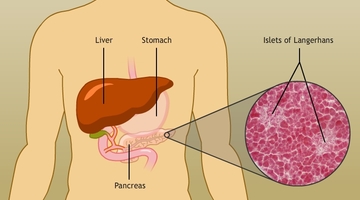Type 1 diabetics inject insulin to control their blood sugar or blood glucose levels. Type 1 diabetics test their blood sugar regularly by pricking a finger and testing sugar levels on a hand-held meter. If their blood sugar is too high, they need to inject insulin to reduce it. Inevitably, type 1 diabetics will experience times when their blood sugar is higher or lower than normal, and this can have both short-term and long-term health complications. These complications have led Bob Elliott and the team at LCT to develop pig cell transplants as a better alternative to insulin injections.
Questions to consider
- How is type 1 diabetes currently treated?
- How and why would type 1 diabetics benefit from a new treatment that could improve their blood sugar control?
Transcript
Bob Elliott (Living Cell Technologies)
A current orthodox treatment for type 1 diabetes is to replace or attempt to replace the missing insulin with injected insulin, and that’s given by injection several times a day. It’s a very imperfect process. Despite the best treatment with orthodox treatment, blood glucose levels still stray outside the normal range very frequently.
Blood glucose going too high or too low and in both directions there are dangers. Too high for too long can damage blood vessels leading to blindness, kidney failure, a high rate of stroke, the blood supply to the brain being impaired, the blood supply to the heart being impaired, coronary heart disease, nerves being damaged, a whole range of very nasty long-term complications, which shorten the life span of diabetics despite good treatment.
And in an attempt to avoid those highs, there’s been a tendency by those doctors who treat diabetes to push the insulin quite hard. The problem with that then is the patient then will go too low with their blood glucose, and that can cause initially just shakiness, dizziness, not thinking clearly. But it can go further than that to loss of consciousness, convulsions, even death.
Now people with type 1 diabetes don’t like having these low blood glucose turns. It can interrupt their schooling, their normal activities. Imagine what would happen if it’s a machine operator who passes out just as he’s operating some dangerous machine or if you’re out having a swim a kilometre from shore and you pass out, well you’re going to die aren’t you, you’re going to drown. And so people with diabetes don’t like that so they try very hard to avoid it and will reduce the dose of insulin and then go in the other direction. These are real problems with standard orthodox method of treating diabetes.
Acknowledgement:
PRN Films


